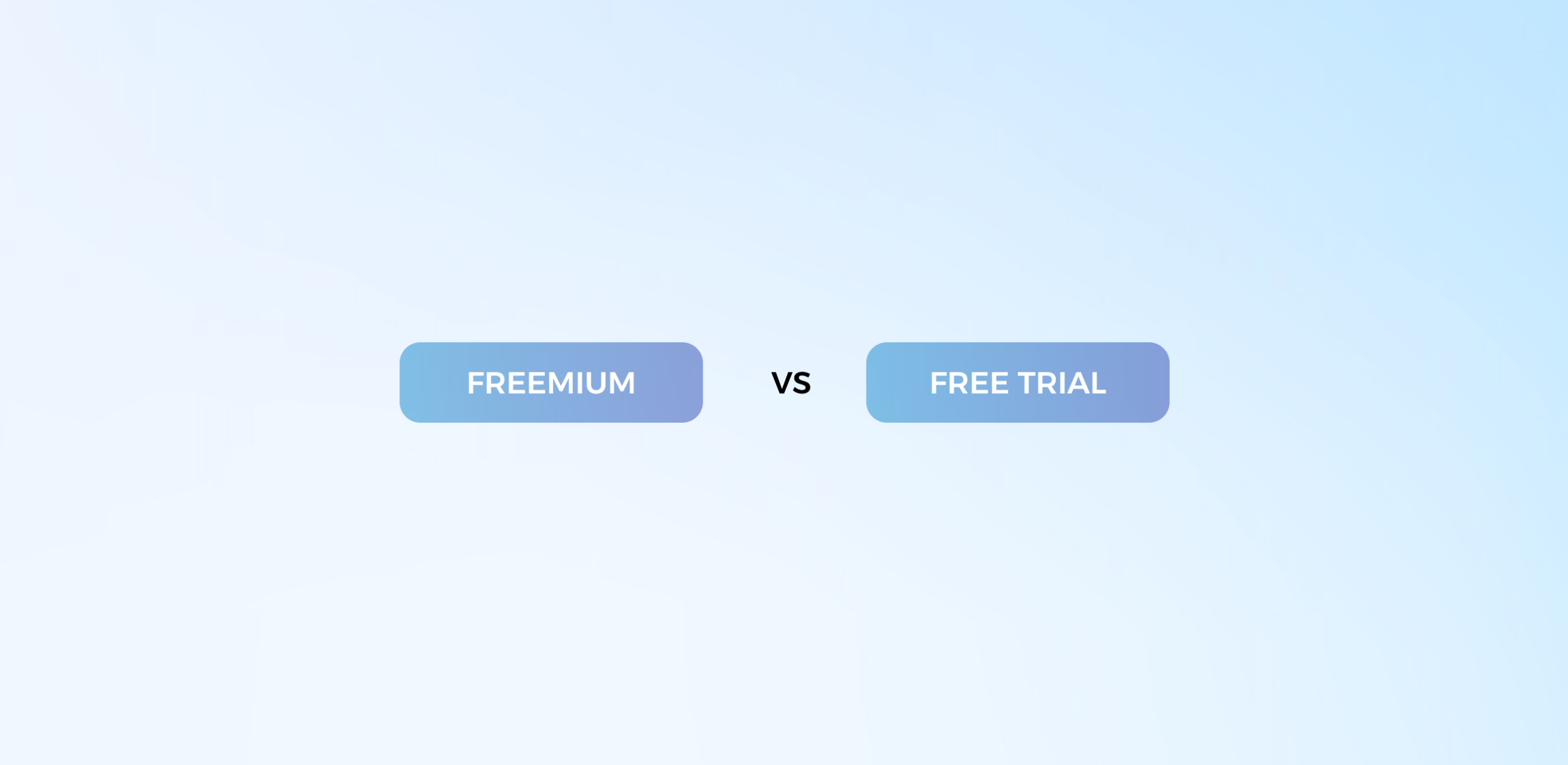When building a SaaS business, one of the decisions you will face is choosing the right customer acquisition model.
Two popular models are freemium and free trial, each with its distinct advantages and challenges.
This article will guide you through understanding these models and help you determine which one is best for your SaaS startup.
What is Freemium?
A freemium model is a customer acquisition strategy that provides users with access to a limited set of features, functionalities, and use cases of your product indefinitely and without charge.
The goal is to attract a large number of users by removing the barrier to entry, allowing them to experience some of the product’s value. However, more advanced features and capabilities are reserved for paying customers.
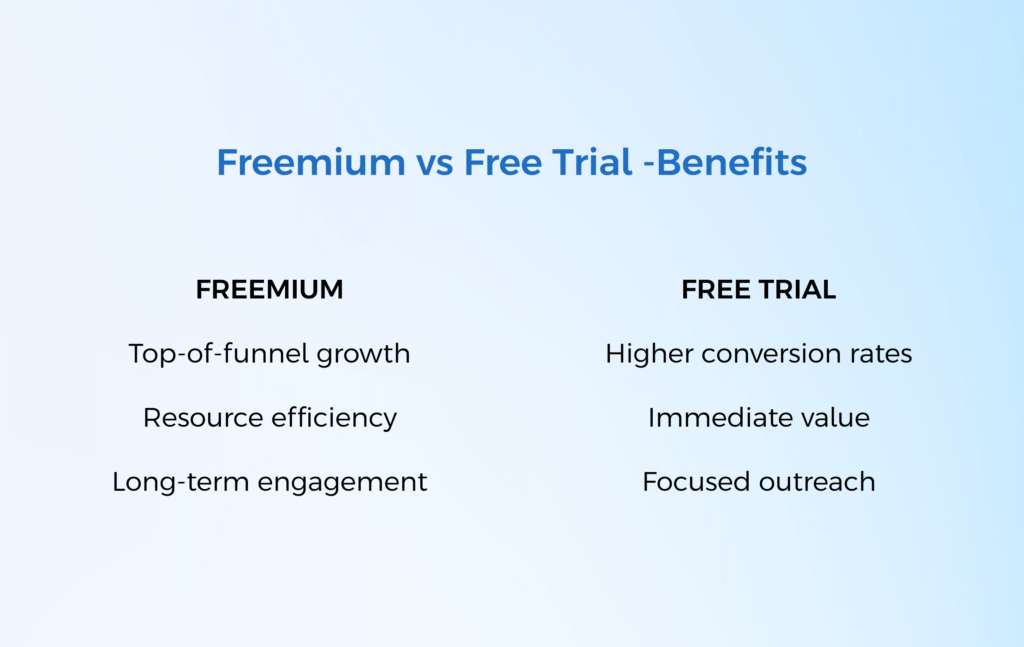
Benefits of Freemium
- Top-of-Funnel Growth: Freemium models generally attract more users at the top of the funnel. This is particularly effective for products that benefit from a large user base, such as Calendly or Zoom.
- Resource Efficiency: Without significant sales involvement, freemium products convert customers 25% more often than free trials.
- Long-Term Engagement: Users can explore the product at their own pace, potentially leading to higher engagement over time.
What is Free Trial?
A free trial model provides users with complete or nearly complete access to the product for a limited time, typically ranging from a few days to a month. This approach allows users to fully experience the product’s capabilities and decide if it meets their needs before making a purchase.
- Higher Conversion Rates: Free trials create a sense of urgency, which can lead to higher conversion rates. The median free-to-paid conversion rate for free trial products is roughly twice that of freemium products (approximately 14% vs. 7%).
- Immediate Value: Users can experience the full value of the product quickly, which can drive faster decision-making.
- Focused Outreach: Free trials often allow for more targeted and effective sales and support outreach, increasing the likelihood of conversion.
What is the difference between a free trial and a freemium?
While both freemium and free trial models are designed to attract users by offering free access, they differ in their approach to product usage limitations.
Access Duration
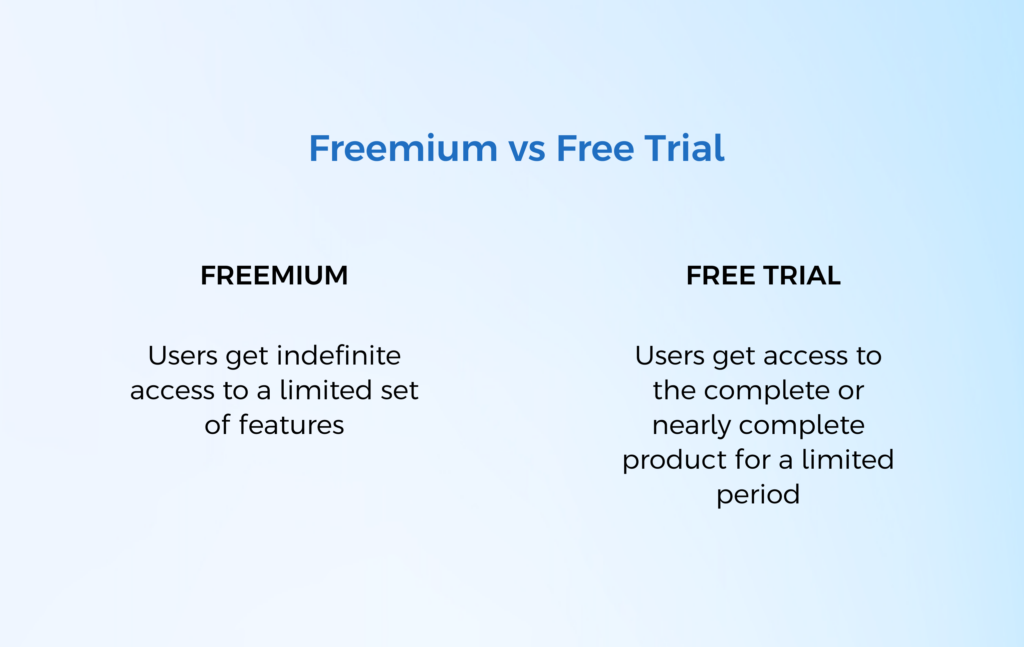
Free Trial: Users get access to the complete or nearly complete product for a limited period.
Freemium: Users get indefinite access to a limited set of features.
User Experience
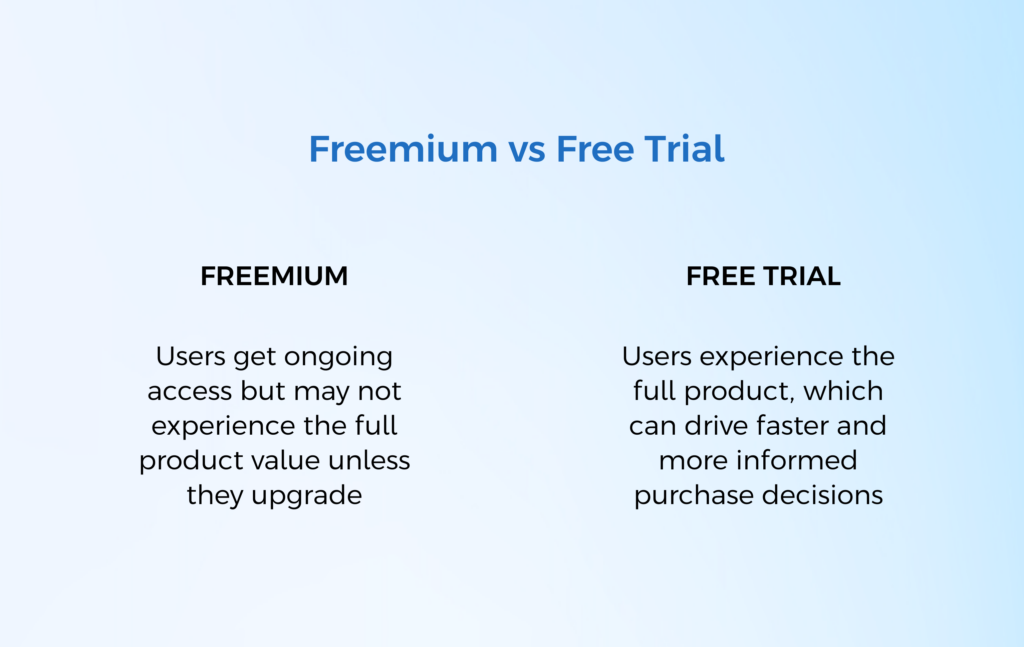
Free Trial: Users experience the full product, which can drive faster and more informed purchase decisions.
Freemium: Users get ongoing access but may not experience the full product value unless they upgrade.
Conversion Drivers
Free Trial: Creates urgency, which can lead to higher immediate conversion rates.
Freemium: Focuses on long-term user engagement and gradual conversion.
How to choose the best for your SaaS?
Choosing between freemium and free trial depends on several factors, including your product type, target audience, and business priorities.
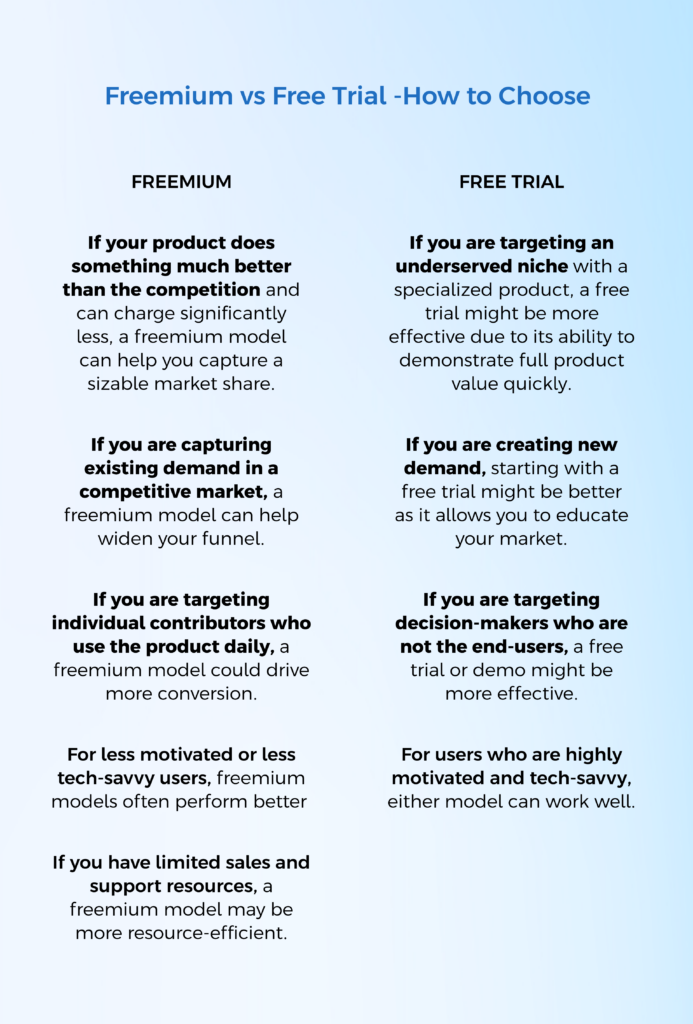
Market Strategy
Dominant Growth: If your product does something much better than the competition and can charge significantly less, a freemium model can help you capture a sizable market share.
Differentiated Growth: If you are targeting an underserved niche with a specialized product, a free trial might be more effective due to its ability to demonstrate full product value quickly.
Disruptive Growth: For simpler, lower-cost solutions aimed at over-served customers, freemium is often the best choice.
Ocean Conditions
Red Ocean (Competitive Market): If you are capturing existing demand in a competitive market, a freemium model can help widen your funnel and reduce customer acquisition costs.
Blue Ocean (New Market): If you are creating new demand, starting with a free trial might be better as it allows you to educate your market about the product’s value.
Audience Targeting
Top-Down Approach: If you are targeting decision-makers (shakers) who are not the end-users, a free trial or demo might be more effective.
Bottom-Up Approach: If you are targeting individual contributors (makers) who use the product daily, a freemium model could drive more engagement and eventual conversion.
Time-to-Value
High Motivation and Ability: For users who are highly motivated and tech-savvy, either model can work well. The choice depends on whether you want quick conversions (free trial) or long-term engagement (freemium).
Lower Motivation and Ability: For less motivated or less tech-savvy users, reducing friction and simplifying the user experience is crucial. Freemium models often perform better in these scenarios by allowing users to explore the product at their own pace.
Resource Efficiency
If you have limited sales and support resources, a freemium model may be more resource-efficient, as it can convert users with minimal human intervention.
Key Takes
Both freemium and free trial models have their own advantages and can be effective in different scenarios. By understanding your market strategy, target audience and resource constraints, you can make an informed decision that aligns with your business goals and maximizes your potential for product-led growth.

